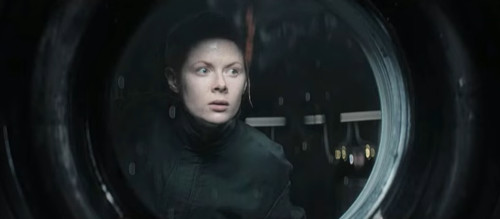 German mystery-science fiction series called “1899” is a show with a rather unexpected plot (by the way, if you haven’t seen this series and are going to, note that there are SPOILERS in this article), lovely historically-accurate stage costumes, and mysterious alchemy symbols applied on the characters’ outfits and jewelry. An interesting thing about the movie costumes of 1899 is that each character has only one set of clothing – no one ever changes into something different from the attire he or she is first seen.
German mystery-science fiction series called “1899” is a show with a rather unexpected plot (by the way, if you haven’t seen this series and are going to, note that there are SPOILERS in this article), lovely historically-accurate stage costumes, and mysterious alchemy symbols applied on the characters’ outfits and jewelry. An interesting thing about the movie costumes of 1899 is that each character has only one set of clothing – no one ever changes into something different from the attire he or she is first seen.
1899 is a multilingual German mystery-science fiction created by Jantje Friese and Baran bo Odar, the showrunners behind Dark.

This material was a little challenging because the author couldn't get her hands on any high-resolution photos, so she had to rely on screengrabs and picks taken from the cast Instagram pages. The costume illustrations you’ll see below are by concept artist Leif Heanzo.
The costumes for 1899 were designed by German costume designer Bina Daigeler, the Oscar-nominated designer behind the live-action production of Mulan.
Aside from the Netflix documentary, the behind-the-scenes, and interview with Screen Rant, the costume designer hasn't revealed too many details so as not to get into spoilers. Bina Daigeler indicated in the behind-the-scenes video that pretty much everything was made for the show in their workroom – from hats to shoes and all of the embroidery.
Some of the costumes, including Ramiro's priest cassock, were made by Peris Costumes International in Madrid.
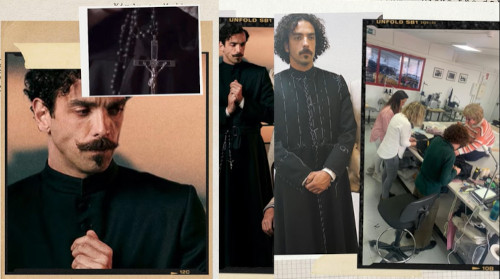
The setting is the year 1899, just like the title of the show, and we are introduced to a series of passengers traveling to America on a steamship. Immediately, it recalls the Titanic Voyage, however, that event took place more than a decade later, in April, 1912.
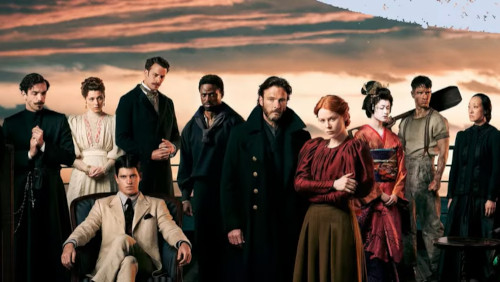
Since the ship is German, the Kerberos might be inspired by the Kaiser Wilhelm der Grosse, a large German passenger ship that was built to carry a maximum of 1,506 passengers, the approximate amount of passengers traveling to the New World in 1899.
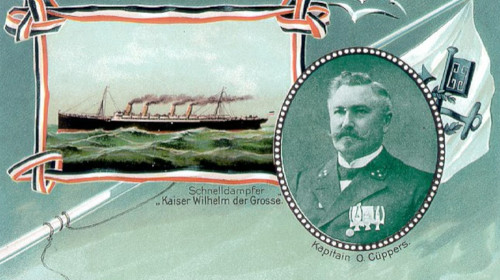
Considered to be the first Superliner, the Kaiser Wilhelm der Grosse also had 4 funnels with 3 classes, while on the Kerberos, we have 2 classes of passengers – first class and steerage.
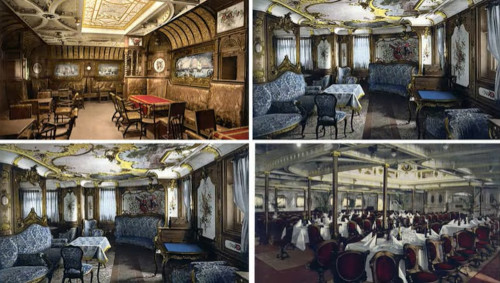
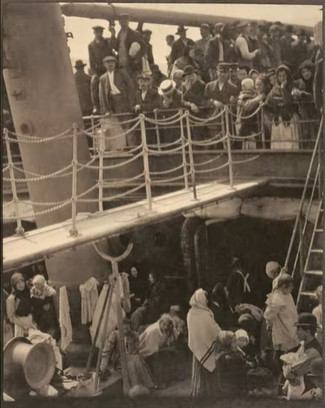
The upper classes are just as we would expect them – the ladies are dressed in silk and velvet day gowns or walking suits with hats, gloves, and purses, while the gentlemen are dressed for the day – in sack suits, frock coats, waistcoats, cravats, and top hats.
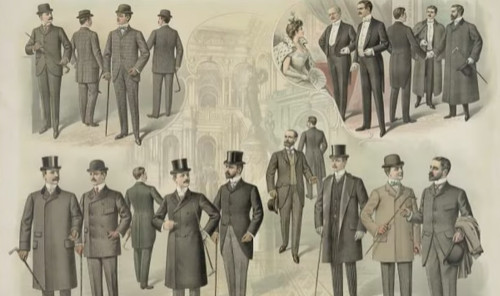
As a compliment to the darkly stained wood interiors, many of the passengers are dressed in warm and earthy-color costumes.
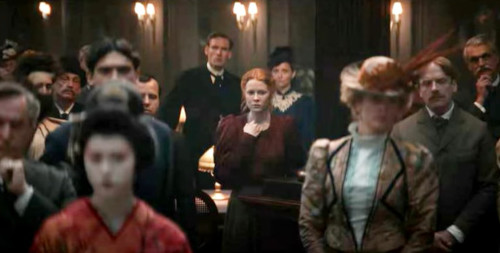

But amongst the softer-hued costumes, is Virginia's acid-green & black gown, the vivid color that, during that era, would be due to the introduction of aniline dyes.
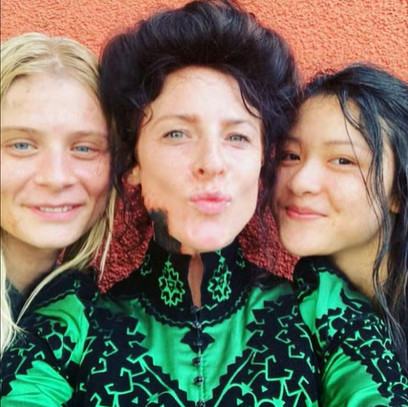
According to the V&A, “The technology of dyeing fabrics was transformed in the mid-1850s when the British chemist William Perkin (1838-1907) discovered that dyes could be extracted from coal tar”.
Here is an example of an aniline green gown from about 1852.
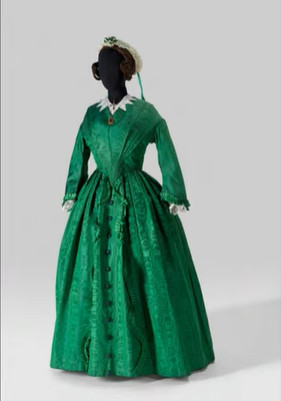
There are many examples of a similar S-bend or S-curve silhouette to Virginia's gown from the late 1800s or the turn of the century.
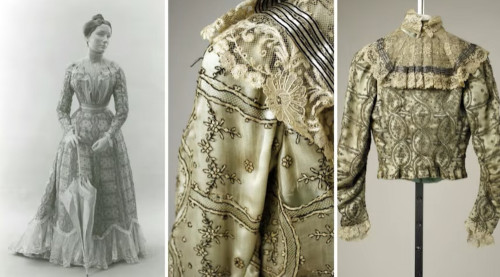
According to the FIDM Museum, “The S-bend silhouette emerged about 1900 and reigned supreme until the end of the decade. Created by a specific style of corset, the S-bend is characterized by a rounded, forward leaning torso with hips pushed back”.

Maura Franklin
With her simple blouse, split skirt, and ankle boots, Maura Franklin’s costume is more casual than the other ladies on the boat, because she is a neurologist and it makes sense that her outfit is more practical.
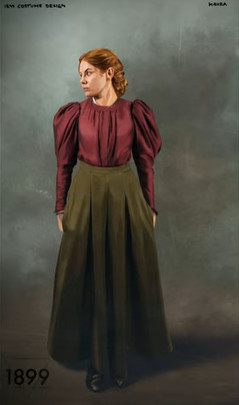
Bina Daigeler tells Screen Rant, “You'll see that somehow she has a masculine touch in the way she dresses”.
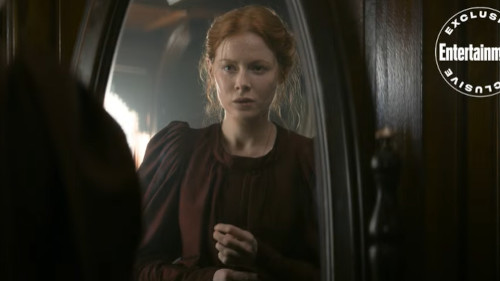
Maura's hemline is also much higher than the ladies’ in first class, probably showing that she doesn't follow social norms.
In the behind-the-scenes video, the costume designer mentions that, while corsets were still in fashion, once she finds herself on the boat, Maura is without the corset and done with it.
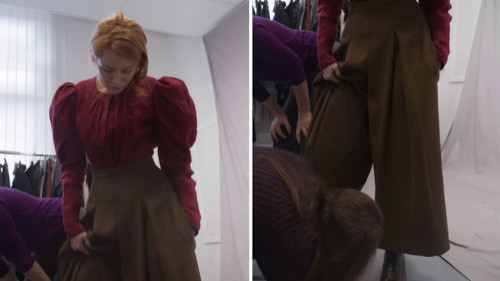
With the introduction of cycling by women, the split skirt became fashionable at the turn of the century. Here is an example of a cycling outfit skirt that, according to The Met, allowed the rider a more comfortable ride, while also giving the modest appearance of a skirt at the front.
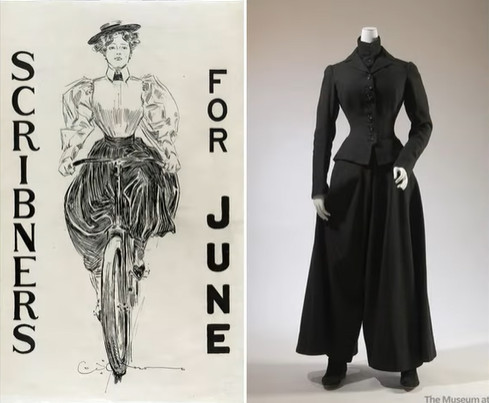
But the museum at FIT states that in Paris, bicycling costumes were a fashionable fad but women risked arrest if caught wearing them while not in the presence of a bicycle.
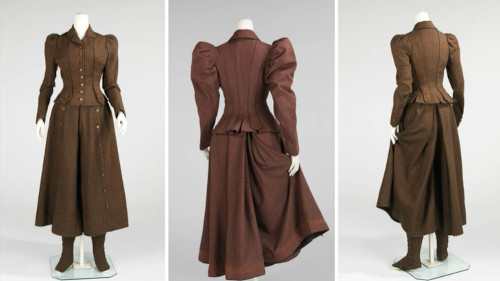
We’re not certain why they went for the brick red color of her silk blouse, aside from looking good with her coloring, but we suspect they were picking up the color of the ship's four funnels.
On Maura’s mood boards, there are several swatches of both her blouse color and split skirt, which is a complimentary khaki color.
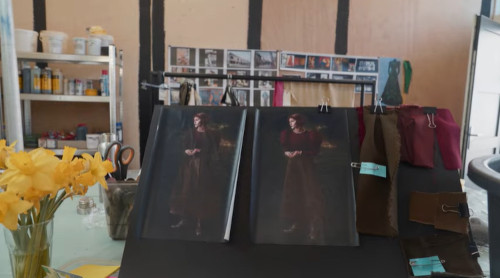
Clémence
The sleeves on Maura and Clémence are known as gigot or leg-o-mutton sleeves. According to the V&A, they were highly fashionable between 1894 and 1896, when women adopted them for all types of activities and occasions. So, historically speaking, they were going out of fashion at this point.
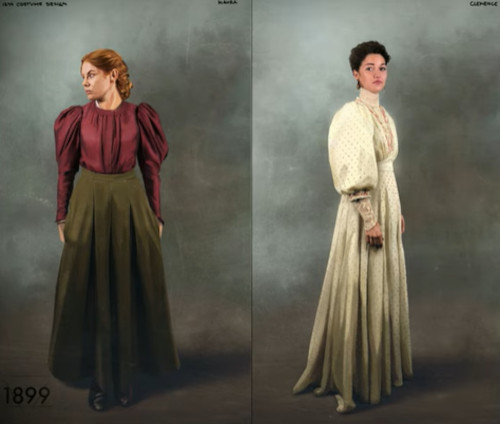
Maura’s sleeves are limper and saggier, while Clémence, the epitome of French style, has plump sleeves.
Many of Clémence’s embroidery trims were custom-made for the show by embroidery artist Cathryn Avison.
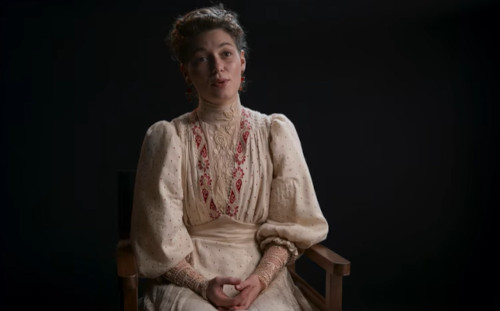
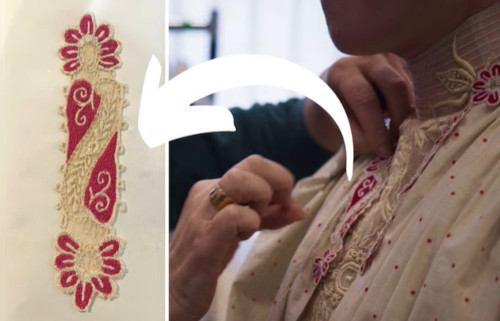
Clémence has accents of berry red in her earrings, embroidery, and boots.
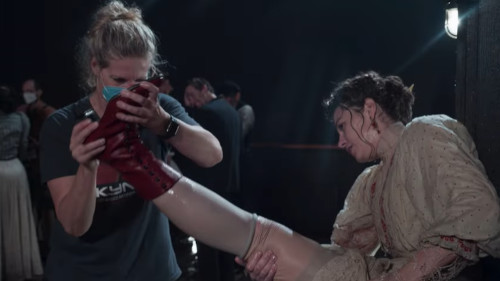
It's in the same palette as Ángel's waistcoat and Maura’s blouse.
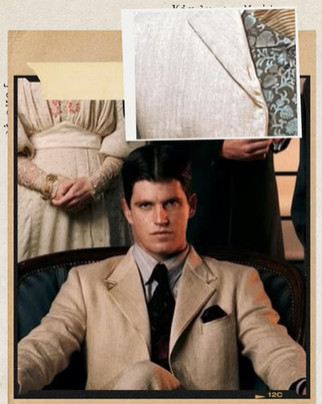
In the debut episode, Clémence is shown in her underclothes and we get a peek at her stockings. In the same scene, she also wears a white silk corset with sweet floral embroidery, with a front busk and bobbin lace trim on the top.

But what's atypical here is that she's wearing the corset over her blouse, when it should be worn over the corset.
Like Ling Yi's traditional kimono ensemble that had multiple layers, at the turn of the century, a young woman like Clémence would also dress in many layers. To create a barrier between the skin and the corset, to absorb dirt and oils, she would’ve don a chemise or a combination chemise/drawers before adding the corset.
On top of that, she would wear a corset protector which, according to The Underpinnings Museum, would have ordinarily been worn over a corset to conceal the corset color and lines from showing through outer garments.
The last layers are the petticoat and possible bump pad, before topping it with a bodice and skirt or gown.
Later in the season, Clémence rids herself of her skirts and trades them in for a pair of men's trousers, quipping that men invented dresses and heels so that women can't run away.
Garments of sailors and steerage class passengers
Now, in juxtaposition to the upper decks, are the steerage class. Most of the passengers down there are dressed in sensible traveling clothes, with the men, women, and children modestly dressed in wools and cottons.
The Danish immigrants have the hallmarks of immigrant clothing and hair, with the women with coiled braids and the men with beards.
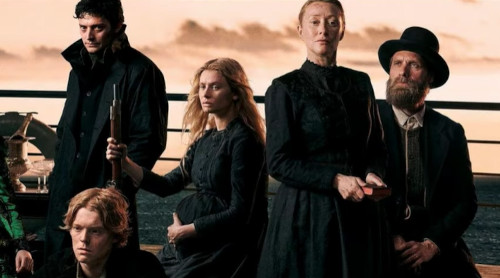
Like Maura, Iben is dressed in a palette of charcoal, black, dark blue, and bottle green.
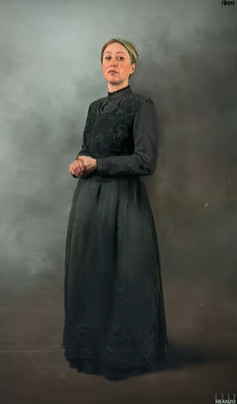
According to the props in the show, the ship is traveling across the North Atlantic in October. All of the ship's crew, including Captain Eyk, are dressed in navy, including the sailors.
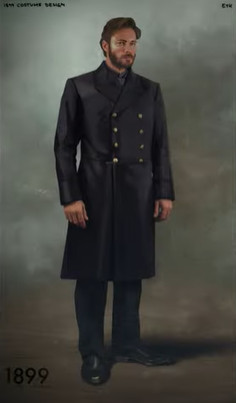
If we were to look at some historical clothing from the era, there are some liberties taken. So for instance, the shirts worn by the crew on the bridge, including the captain, are gray, when they would most certainly be white.
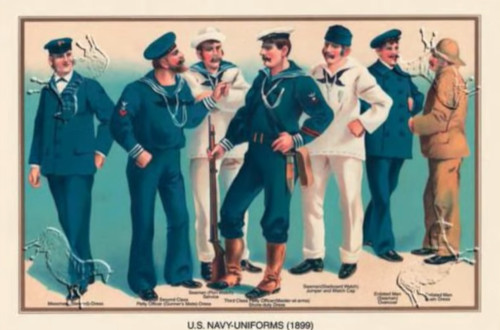

The name of the ship is Kerberos. In Greek mythology, Kerberos is the Hound of Hades, a multi-headed dog that guards the gates of the Underworld to prevent the dead from leaving.
Here is a picture of steamship stokers in the engine room. They look very close to the ones worn by the characters in the show, working in the bowels of the ship that might be described as “hot as Hades”.
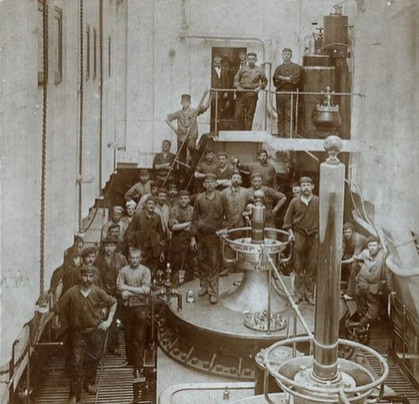
Daniel and “the boy”
At first, the author thought that Daniel's costume looked slightly futuristic, sort of matrix-like, but trench coats have been around for more than a century and the Burberry trench, for which most trench coats are fashioned after, was invented by Thomas Burberry in 1879, 20 years before the setting on the ship.
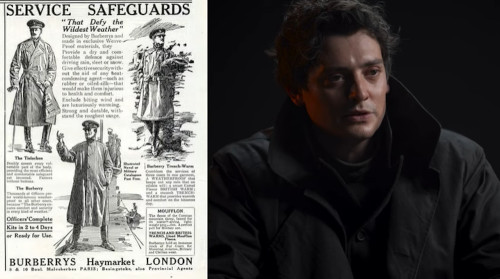
The boy, meanwhile, is dressed in a blue suit consisting of a jacket and cropped pants.
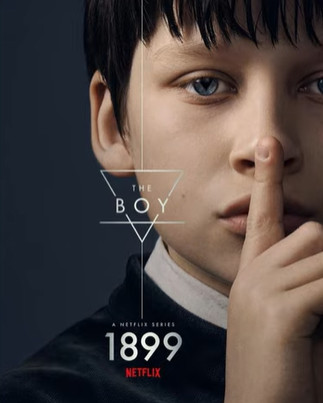
There are many historical examples of this style of costume, but these all appear to be from much earlier than 1899.
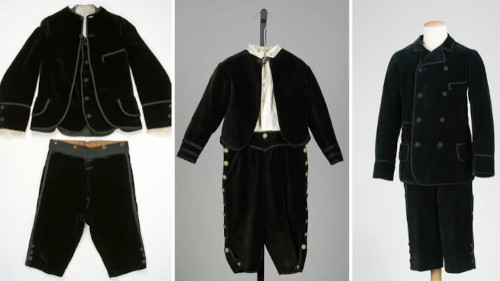
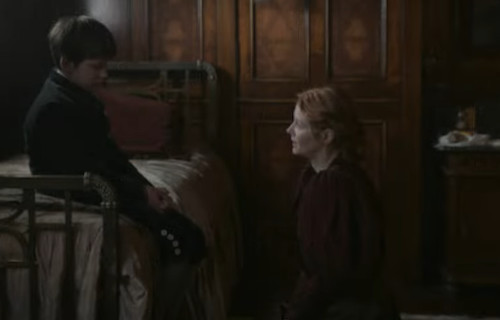
Single outfit for each character?
A strange thing is, no one ever changes their clothes. It took the author a few episodes before she noticed this. Now, they did undress or remove items of clothing, but then they would go back to wearing the same outfit again.
So, for instance, Ling Yi removed her kimono in her cabin, Ramiro got into bed but left his cassock on the floor, and Krester stripped down to wash his hair.
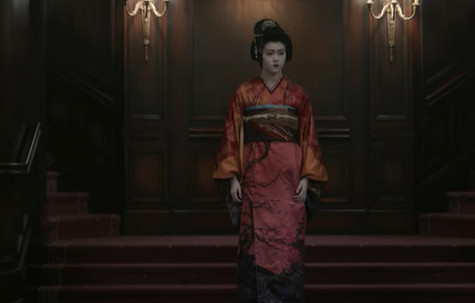

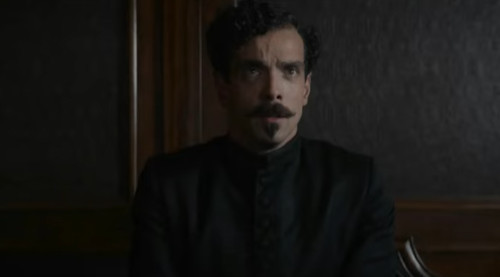
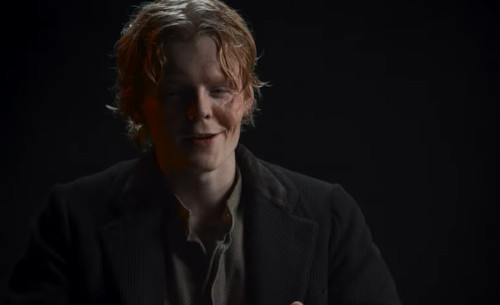
It's not completely unheard of that people would not wear the same outfit more than once, especially the lower classes, but the upper classes – nope.
The costume designer said that they originally planned on having 4 or 5 changes for the characters at the onset but when they discussed the evolution of the characters, they decided that they preferred each character to have one hero piece, kind of like a superhero.
As the season goes on, the characters begin losing parts of their costumes and they get filthier and filthier.
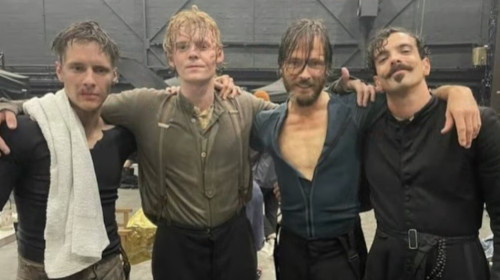
In Tove's flashback scene, her family is dressed in brighter and lighter colors.

It seems like they wore entirely different costumes but looking at them more closely, you realize that they are in the same costumes but the ones worn on the ship are dyed black.
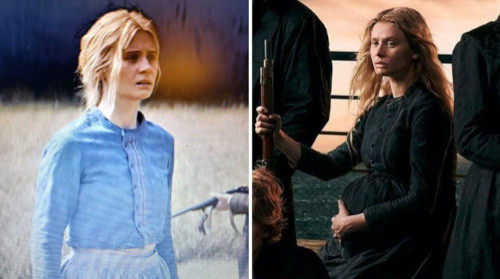
In the flashback, Iben wears a cap. It's similar to this Danish cap from the 19th century.
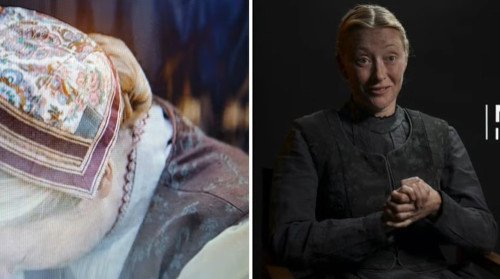
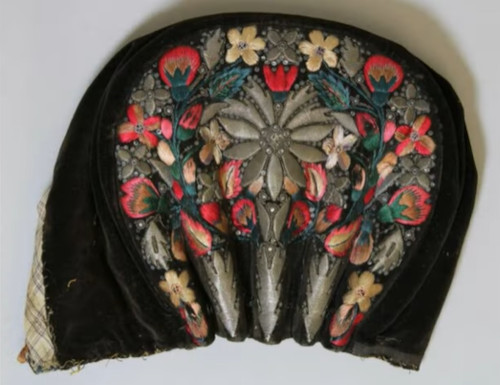
The Earth symbol on characters’ costumes
One of the biggest giveaways that things are not as they seem is the Earth symbol from alchemy that is present throughout the ship.
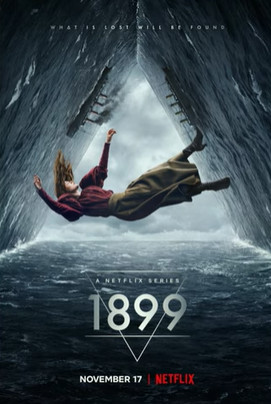
Earth is one of the 4 classical elements in ancient Greek philosophy and science. The symbol is littered throughout the marketing for the show and in the eyes of the characters. It was commonly associated with qualities of heaviness, matter, and the terrestrial world.
In the show, you can see it on the carpet and in the trapdoors, and embossed on the envelopes, and as a tattoo on the neck of Elliot, and in the final episode, on Maura.
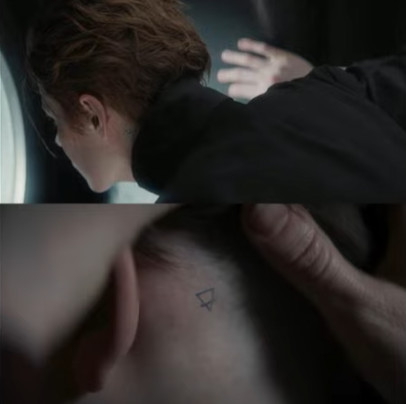
But costume wise, the most obvious places that we notice this emblem, which we learn is the trademark symbol for Henry Singleton's company, is also featured prominently on the back of Ling Yi's kimono, and Clémence's earrings and her hair comb are shaped like the Earth symbol.
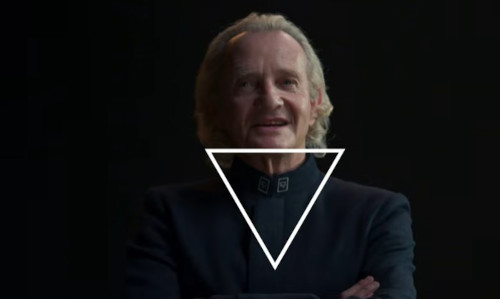
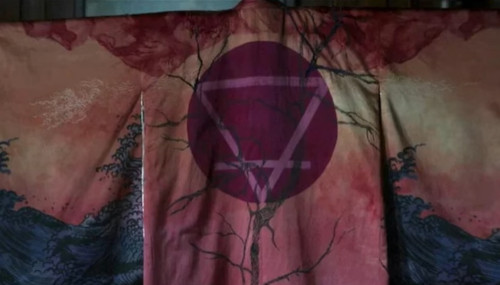
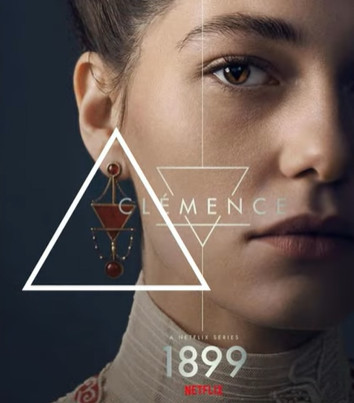
But the less obvious places for these symbols are right in the clothing. You see it printed onto Virginia's green brocade gown, stitched onto the collar of Ramiro's cassock, and Lucien's brocade waistcoat, and embroidered on Yuk Je's top.
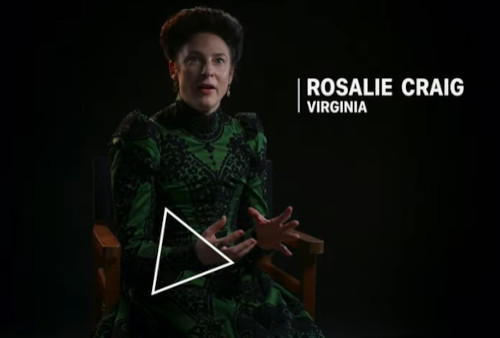
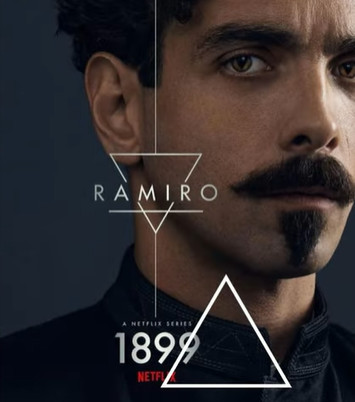
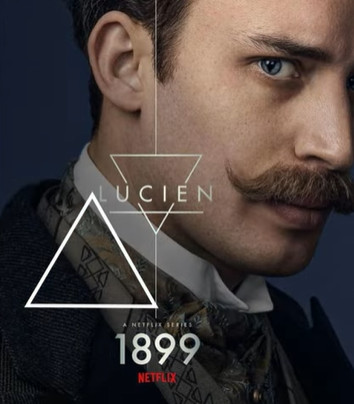
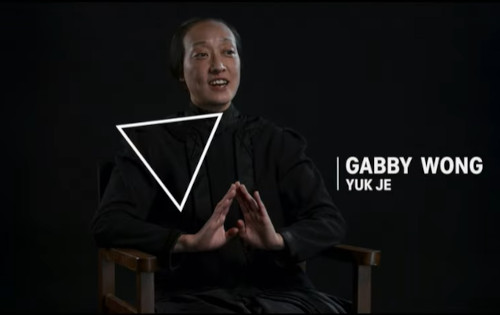
Costume designer Bina Daigeler said in the behind-the-scenes documentary that many of the fabrics were custom-printed and hand-dyed for the show.
Because many of the pictures on the show are so low res that we couldn't make it out, 1899 on Instagram also released pictures of some of the other characters who also have embroidery, buttons, or cufflinks featuring the symbol as well.

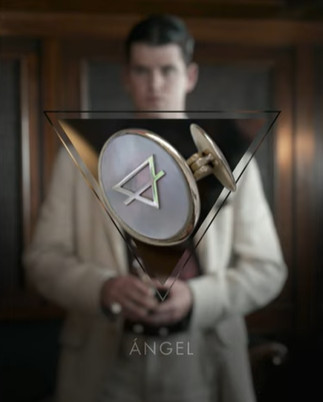
The triangle symbol might also represent the Bermuda Triangle or the Devil's Triangle. And thinking about the Titanic, you can recall Freud's theory that, like an iceberg above the surface of the water, the most important part of the mind is the part you cannot see.
Ling Yi's kimono
Concept artist Leif Heanzo said that Ling Yi's kimono design was the most challenging thing he’s ever encountered during costume design. He said, “Usually, a kimono like this is painted on after all the parts are put together. To make it appear like that there was a tremendous amount of planning involved”.
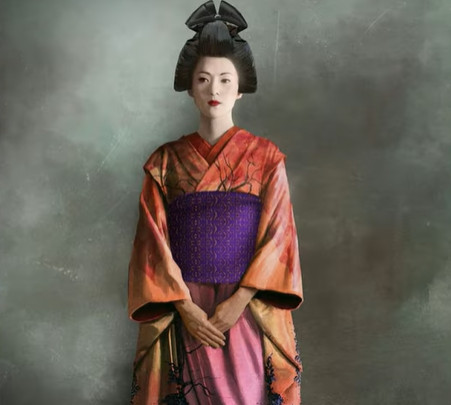
Here is an example of a red-orange dyed silk kimono or, more accurately, a furisode, meaning “swinging sleeves” from the middle of the 19th century.

The embroidered branches of the tree on Ling Yi's kimono reminded us of the growing black virus of the simulation shutting down.

Actor Isabella Wei said that her favorite part of her Ling Yi costume is the obi sash that prominently features a large cockroach, also embroidered by Cathryn Avison, with little cockroaches in the shape of the Earth symbol off to the side.
At first, the author thought that the embroidery of Clémence's collar was a flower but looking at it more closely now, she thinks it's another kind of beetle.
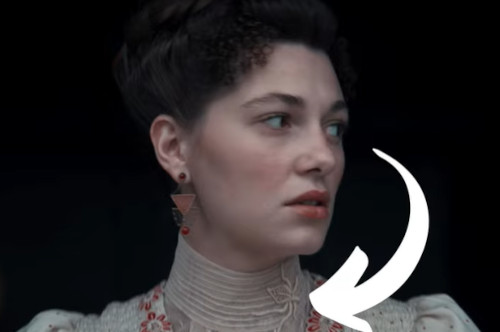
All this was a simulation?!
In 2099, we are on a spaceship called Prometheus, the same name as the Alien prequel movie. The crew was in stasis and they are dressed in loosely fitting two-piece ensembles worn by both the men and women, in stark contrast to the costumes worn in 1899.

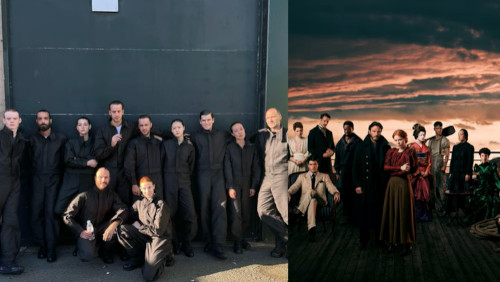
Because we know that the setting is a simulation and, by the final episode, Maura and the crew are on the spaceship, our head cannon goes to who designed the simulation.
